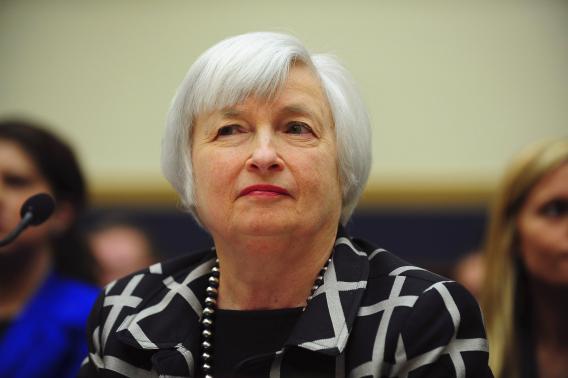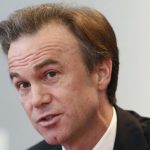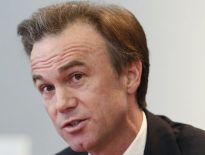Janet Yellen, fresh from taking the helm of the Federal Reserve, made it clear on Tuesday she would not make any abrupt changes to U.S. monetary policy, saying the central bank was on track to keep reducing its stimulus even though the labor market recovery was far from complete.

In her first public comments since becoming Fed chief earlier this month, Yellen had testy exchanges with some Republican lawmakers over Wall Street regulation and central bank independence. But she managed to keep financial markets calm by emphasizing continuity with the policy approach taken by her predecessor, Ben Bernanke.
Yellen said the central bank must keep its eye on the unusually high incidence of long-term unemployment and the exceptionally high proportion of Americans who can find only part-time work as it plots a tricky reversal of its very accommodative policy stance.
By a number of measures our economy is not back, the labor market is not back, to normal, Yellen told the U.S. House of Representatives’ Financial Services Committee. There’s a great deal of slack in the labor market still.
Under Bernanke, the Fed bought trillions of dollars in bonds to drive borrowing costs lower and spur investment and hiring, swelling its balance sheet to more than $4 trillion. In December, it decided to begin scaling back its support given a drop in unemployment and stronger economic growth.
Since then, however, signs have emerged of a sharp slowdown in jobs growth, leading some investors to wonder whether the Fed might put the wind-down of its bond-buying program on hold.
But Yellen showed little inclination to change tack. She said the Fed would likely take further measured steps to curb its stimulus if data broadly supports policymakers’ expectation of improved labor markets and a rise in inflation, and she cautioned against reading too much into recent jobs figures.
Prices for U.S. government bonds slipped and stocks rose, with major indexes closing up more than 1 percent, as investors saw few surprises in Yellen’s comments.
It’s very obvious she is working from the same playbook as Bernanke, said Tom Porcelli, chief U.S. economist at RBC Capital Markets in New York.
ACCOLADES AND BARBS
In only her second week on the job after serving for more than three years as the Fed’s vice chair, Yellen received accolades from both Republicans and Democrats on being the first woman to lead the central bank in its 100-year history.
But during the unusually long hearing on the Fed’s semi-annual monetary policy report, she referred to notes and appeared uncomfortable at times in addressing sharp questions on regulation. At one point during the more than four hours of questioning, Yellen said she would have to study the details on a ban on bank proprietary trading before advising on how lawmakers might want to adjust the so-called Volcker Rule.
Yellen, who was appointed to chair the Fed by President Barack Obama, was cut off at times by committee Chairman Jeb Hensarling and other Republicans as she tried to patiently explain the central bank’s two-pronged approach to supporting the economic recovery: buying bonds and promising low interest rates for a while to come.
The Fed has trimmed its monthly asset purchases by $10 billion at each of its last two policy meetings; it now buys $65 billion in Treasuries and mortgage bonds per month, and it expects to shutter the program by later this year.
Yellen said the purchases were not on a pre-set course, but added that it would take a notable change in the outlook for Fed policymakers, who next meet on March 18-19, to set aside their plan to wind down the program.
As for the possibility of actually increasing their bond buying, she said it would take a significant deterioration in the outlook for the job market, or very serious concerns that inflation was not moving higher over time. Inflation is running at just 1.1 percent, well shy of the Fed’s 2 percent target.
Yellen nodded to the recent volatility in global financial markets, where some emerging market currencies and stocks have sold off in recent weeks, but she said at this stage it did not pose a substantial risk to the U.S. economic outlook.
EYE ON JOBS MARKET
More than five years after the 2007-2009 recession ended, the Fed has embarked on perhaps its most difficult policy shift as it tries to back away from flooding the financial system with ultra-easy money while convincing investors that interest rates will stay near zero well into next year.
Having lowered rates to near zero in the depths of the crisis in late 2008, the Fed has said it does not expect to raise them until well after the time the jobless rate drops below 6.5 percent, especially if inflation remains weak.
But unemployment has already reached 6.6 percent, down from 8.1 percent when the Fed launched the latest bond-buying program in 2012, and policymakers are scrambling to decide how best to adjust their guidance.
A shaky run of recent data, including two straight months of weak jobs growth, has raised questions over whether the economy can sustain the strength it showed in the second half of last year. Gross domestic product grew at a 4.1 percent annual rate in the third quarter and at a 3.2 percent pace in the fourth quarter.
We have to be very careful not to jump to conclusions in interpreting what those reports mean, Yellen said, referring to the jobs data, which she said may have been impacted by unusually cold winter weather.
While Yellen said the unemployment rate remained well above the central bank’s target level, she also said a significant part of the fall in labor force participation was structural and, therefore, permanent. That would mean the jobless rate commensurate with full employment has risen.
At the hearing, Republicans aired their concerns that the Fed’s aggressive easing of monetary policy had raised the risks of a troubling bout of inflation and asset bubbles, and made it easier for the government to run large budget deficits.
Hensarling said the Fed’s promise to keep rates low well into the future was a noticeable departure from a decades-old monetary policy rule of thumb that Yellen once called the mark of a sensible central bank.
So that begs the question today, using your words, are you a sensible central banker, and if not, when will you become one?, he asked.
Congressman, I believe that I am a sensible central banker, Yellen replied.
(Reporting by Jonathan Spicer and Jason Lange; Additional reporting by Margaret Chadbourn and Lucia Mutikani in Washington and Ann Saphir in San Francisco; Editing by Andrea Ricci, Timothy Ahmann and Paul Simao)





